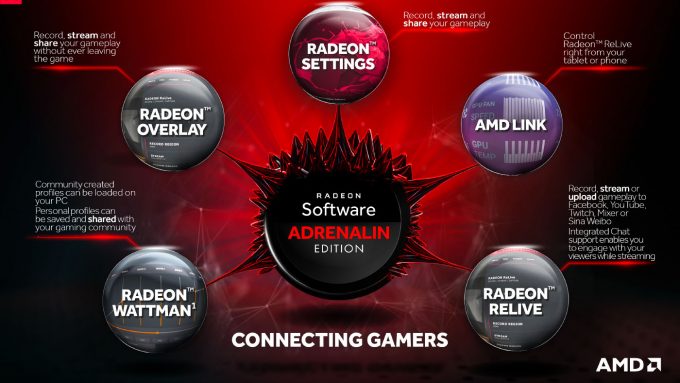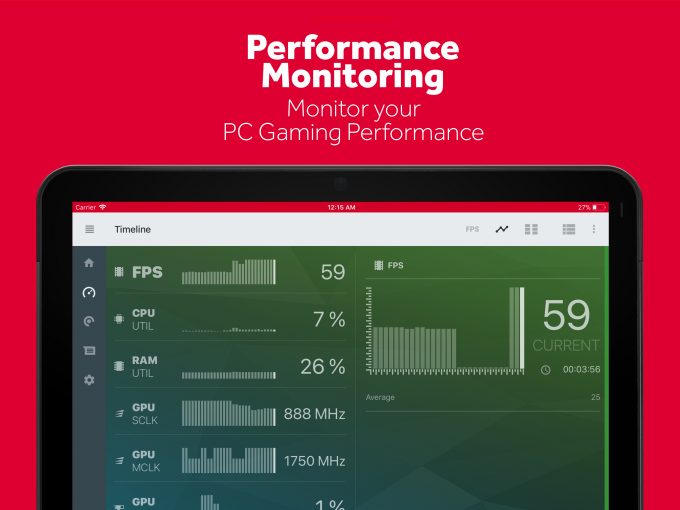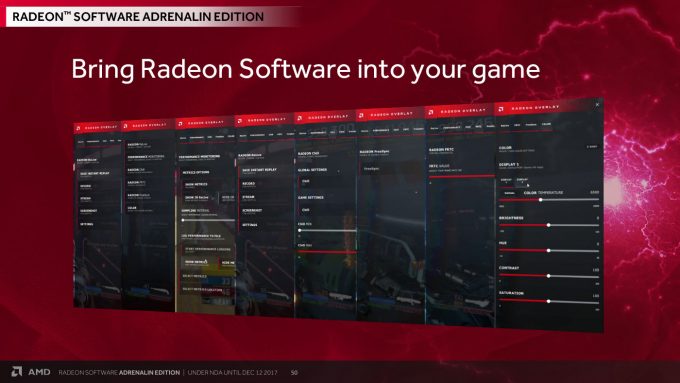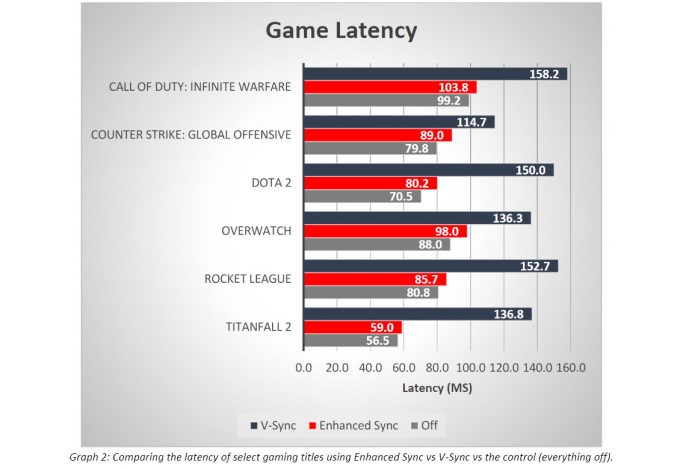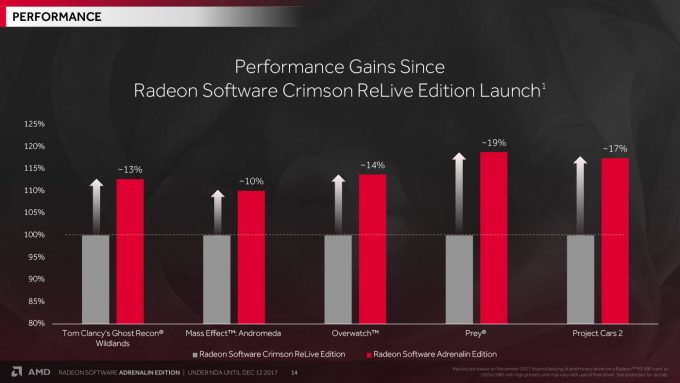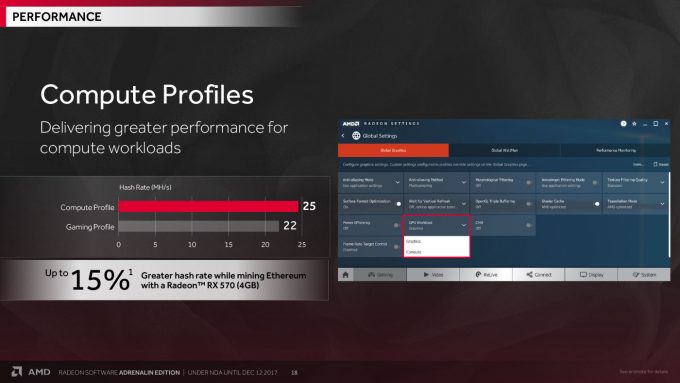- Qualcomm Launches Snapdragon 4 Gen 2 Mobile Platform
- AMD Launches Ryzen PRO 7000 Series Mobile & Desktop Platform
- Intel Launches Sleek Single-Slot Arc Pro A60 Workstation Graphics Card
- NVIDIA Announces Latest Ada Lovelace Additions: GeForce RTX 4060 Ti & RTX 4060
- Maxon Redshift With AMD Radeon GPU Rendering Support Now Available
AMD Adrenalin Drivers: Monitor & Control Your System From A Smartphone, Plus New Overlay Features

The new Radeon Software Adrenalin Edition is part of AMD’s annual refresh of its drivers, aimed at delivering major new features, as well as continued performance enhancements. From improvements to Chill, ReLive, and WattMan, there’s also Enhanced Sync and Compute modes, a new overlay system, and integration with a smartphone through AMD Link to monitor you’re system.
A couple of years ago, AMD started on a path to dramatically overhaul its driver development process, and bring it forward into a modern world. Not only was the entire user interface completely overhauled, but AMD also delivered a commitment to keeping it up-to-date with new game optimizations and features. Part of that ongoing development also entailed a yearly refresh of functions, and a new name.
While AMD users will now be familiar with Radeon Crimson, and Crimson ReLive, the next release of the software stack comes in the form of Adrenalin, deliberately dropping the ‘e’ as this is named after the Adrenalin Rose (keeping in with the whole red theme). Radeon Adrenalin edition has quite the long list of features, and is probably the biggest update to the software stack since Crimson was initially launched in 2015.
AMD wanted to point out from the start that this launch isn’t focused on performance, but feature development. This is not to say that there are no performance improvements, in fact, there are quite a few, but most of the bullet points of this release center around new features and updates to existing ones.
AMD Link And Overlay
We’ll start with the main headline launch and spill the beans on probably the most interesting feature of the launch, that of AMD Link. This is a feature that can effectively be summed up as “do it on a smartphone“, and is a way for AMD users to control and monitor their PC from their phone. While this does sound rather odd, what’s on offer is admittedly useful.
AMD Link is an extension of another feature being updated and that’s the Overlay, a way for people to access many of the tools and features of the Radeon software, while they are in-game. This includes monitoring temperatures, clock speed, CPU, RAM, GPU utilization, and FPS, as well as recording sessions with ReLive. All of this is streamed to the Link app (available for both Android and iOS), which also acts like a data-logger, so you can record this info and follow utilization over time. Link can also allow you to connect to multiple PCs, so you can monitor each of them (although not at the same time).
Link also acts as a remote control for ReLive, so you can record gaming sessions, get instant replays, take screenshots, manage your library of media, and even share content with friends over social media (such as upload screenshots) through the new AMD Connect service. All of this is done so as to not distract you while in-game, and keeping things separate. In addition, there is a news feed as well to notify you of driver updates, social feeds on new games, and a space to provide feedback. AMD said that they don’t intend to use this as an advertising platform.
Overlay is, as the name implies, and overlay for games that shows you the same system specs, utilization, and performance, but with extra functions on top. It provides direct access to the ReLive features, and you can turn on and off many of the advanced features that Radeon software now comes with, such as Chill, FreeSync, frame limiter (FRTC), and adjust color settings (so you can brighten up dark places or adjust other colors). The default hotkey for accessing the Overlay is [ALT]+R.
For those that need a quick reminder, Radeon Chill is a type of power-saving rendering mode that adjusts frame rates based on movement in the game. The idea is that when you are stationary or there is little going on, the drivers will slow down the rendering engine, saving power in the process. When movement is detected, be it from the user or a character moving on screen, the drivers will kick in and work at full speed. This isn’t a new feature, as it was introduced last year, but this time around, Chill is now available by default as a black list, rather than working on only select games (white list). Chill is not enabled by default, users will still need to turn this on, but it just means that all games can take advantage of it unless AMD says otherwise.
Enhanced Sync
This is a new feature that has caused a bit of confusion, as it’s yet another adaptive sync technology like G-Sync and FreeSync. In order to stop games from displaying half frames and causing screen tearing, Vertical Sync, or V-Sync was introduced many years ago for game engines. V-Sync clamps the frames to the refresh rate of the display to prevent double frames from appearing and causing a tear.
While effective, it meant that frames completed had to wait for the next refresh cycle when the frame rate drops below the monitor’s refresh rate, which can introduce lag. Adaptive sync systems, like FreeSync, only updates the display when a frame is available, and synchronizes the GPU and monitor, effectively eliminating lag and stuttering when the frame rate is too low, however FreeSync does nothing when the framerate exceeds the monitor’s range (you still need some type of V-Sync on top).
Now, Enhanced Sync is another system that works in conjunction with FreeSync (you don’t need an Enhanced Sync display), in fact, it’ll work with any display. Enhanced Sync is a dynamic form of V-Sync in that when the frame-rate exceeds the monitor’s refresh rate, it will just display the latest frame rendered (like V-Sync). When the frame-rate drops below the monitor refresh rate, it will temporarily disable V-Sync, and thus allow all frames to be displayed as they come (including screen tearing if it occurs), that way, it almost eliminates any kind of input lag that can occur with V-Sync.
This means when used in conjunction with FreeSync, Enhanced Sync covers both the high and low-end of the refresh rate, allowing both lag and stutter free low frame rates, and then tear and lag free frame-rates at the high-end. AMD provided a graph on what kind of latency reduction Enhanced Sync has over V-Sync, which you can see above.
WattMan, ReLive, Vulkan, And Compute
People that make use of WattMan, the overclocking and power management suite built into the Radeon drivers, now supports profiles. This was something people have been asking about for a while now. So when you have finished gaming for example, there is no need to keep the overclock engaged, so you can now slow things down if you wish. In addition, profiles can be shared with the community, so if someone creates a solid profile, then they can share it with others that may find it complex to sort out themselves.
Vulkan has been a focus of AMD for a while, and the latest Adrenalin drivers further expands support. While there is the normal performance tweaks here and there, many of the Radeon software features couldn’t support Vulkan games. With Adrenalin, that changes, as ReLive can now record Vulkan games like Doom, Frame Rate Target Control and Chill can now also work with Vulkan titles.
ReLive had some additional tweaks as well, since it not only supports more titles with Vulkan, the performance impact on games has been reduced too. ReLive uses the GPU’s built-in dedicated encoder when rendering videos, so it doesn’t have a major impact on games, however, there is still an impact through power and the frame buffer. Adrenalin smooths out the video process and drops the performance impact to basically 1-2% – in effect, you won’t even know it’s on. There is also separation of audio tracks (so you can record your mic separate), as well as enable chat overlays or limit recording to a certain part of the screen (such as when using windowed mode). There is even a chroma-key filter so you can remove backgrounds from webcams.
The last tweak is a new mode that will no doubt anger and delight certain people, and that’s the availability of a new ‘Compute’ mode. This switches the driver’s performance to be more compute optimized, rather than graphics. The result is, at least by the example by AMD, is a 13% increase in Etherium hashrates – cyrptocurrency miners rejoice.
Much More To Come
There are lots of little tweaks and performance boosts to be had, as well as layers of features to be extended and added. This latest driver update is huge, and will take a while to test out all the extra features. It will take time to see if things like AMD Link will prove useful beyond a simple curiosity, although I can see overclockers using it extensively.
ReLive’s extras makes it more versatile at streaming that before, and while the video quality isn’t up to the same standard as a CPU encoder, the limited performance impact makes up for it. The ability to do chroma-key will certainly help streamline some of the software, or reduce the need for a second streaming PC.
AMD really has made a complete turn-around the last couple of years, and this latest release shows that it’s really pushing software development. It will be interesting what it has planned for next year’s release.
Support our efforts! With ad revenue at an all-time low for written websites, we're relying more than ever on reader support to help us continue putting so much effort into this type of content. You can support us by becoming a Patron, or by using our Amazon shopping affiliate links listed through our articles. Thanks for your support!




